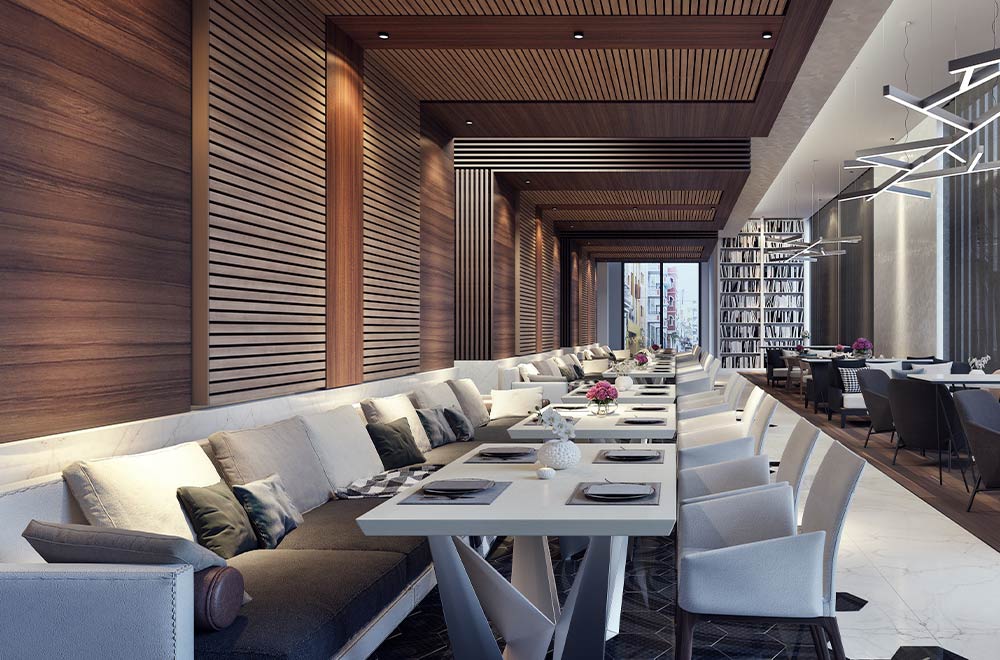Savor Genuine Asian Food With a Pan-Asian Twist for a Culinary Experience
Beginning on a cooking journey with genuine Eastern food, improved with a Pan-Asian spin, uses a distinct opportunity to discover the abundant tapestry of tastes that specify the area's diverse cooking practices. This experience invites you to appreciate the splendid equilibrium of tastes-- sweet, salty, spicy, and sour-- harmonized by fragrant natural herbs and flavors. Visualize the cutting-edge blend of Thai curry and ramen or the unforeseen joy of sushi burritos. As you contemplate these tempting dishes, consider the cultural narratives and historic influences that shape them, each bite offering a tale waiting to be found.

Checking Out Pan-Asian Tastes
In the realm of international gastronomy, Pan-Asian cuisine sticks out for its impressive diversity and the unified interaction of tastes from different Asian societies. This culinary approach celebrates the abundant customs and unique components discovered across the continent, developing a tapestry of tastes that is both gratifying and interesting. Key to Pan-Asian food is its ability to stabilize contrasting tastes-- sweet, salty, spicy, and sour-- while highlighting the quality and high quality of each component.
From the umami-rich soy sauce of Japan to the fiery chili peppers of Thailand, Pan-Asian food supplies a considerable palette of flavors. These components are usually integrated in creative ways, enhancing recipes with layers of complexity. As an example, using fragrant natural herbs such as lemongrass and cilantro, common in Vietnamese and Thai cuisine, includes a refreshing illumination to dishes, while the incorporation of coconut milk provides a luscious, rich appearance.
The focus on fresh fruit and vegetables and aromatic seasonings ensures that each dish is not just a feast for the taste yet also for the senses. Pan-Asian food invites diners to begin on a cooking journey, checking out the vast and varied landscapes of Oriental gastronomy with every bite.
Combination Recipes to Attempt
While Pan-Asian food is commemorated for its typical tastes, the contemporary culinary landscape is progressively accepting fusion recipes that blend these classic elements with impacts from other areas. This ingenious technique not only honors the abundant heritage of Asian cookeries but additionally introduces unique taste experiences that interest modern tastes.
A prime instance of such a fusion recipe is the Korean-Mexican taco, where marinaded bulgogi beef is covered in a warm tortilla, topped with kimchi and a hot gochujang-infused salsa. This mix marries the strong, tasty tastes of Korea with the dynamic, fresh aspects of Mexican food. Similarly, sushi burritos have actually acquired appeal, integrating the fragile virtuosity of Japanese sushi with the hearty, hand-held comfort of a burrito, typically including blend ingredients like tempura shrimp and avocado with a drizzle of wasabi mayo.
An additional significant dish is Thai curry ramen, which instills the creamy, aromatic seasonings of Thai curry into the soothing broth of standard Japanese ramen, developing a harmonious mix that tantalizes the detects. These blend dishes prolong beyond mere uniqueness; they represent a cooking dialogue between societies, encouraging exploration and advancement worldwide of Pan-Asian cuisine.
Essential Components and Seasonings
To absolutely value Pan-Asian food, one need to understand the important components and spices that form its foundation. This varied cooking view website design attracts from an abundant tapestry of Oriental traditions, employing a harmonious blend of flavors and textures.
Aromatic link elements are crucial, with lemongrass, ginger, and garlic being common across various Pan-Asian dishes. These components supply an aromatic base that boosts the complexity of flavors. Seasonings such as star anise, cardamom, and cinnamon introduce warmth and personality, resembling influences from regions like China and India.

Food Preparation Techniques and Tips
Grasping the art of Pan-Asian food requires familiarity with its unique cooking strategies, each adding to the lively tapestry of tastes this culinary practice is commemorated for. Central to these methods is the stir-fry, a fast food preparation technique that preserves the nutritional honesty and vivid colors of components. Making use of a frying pan, the stir-fry technique permits also warmth distribution, crucial for Visit This Link achieving the characteristic structure and taste balance of Pan-Asian recipes.
Another fundamental technique is steaming, especially common in Chinese food. This mild approach keeps the all-natural tastes and nutrients of ingredients, making it perfect for seafood and vegetables. Dumplings, a beloved staple, usually benefit from steaming, resulting in soft, delicious textures.
Cooking, additionally integral, imparts great smoky depths to meals such as Korean bulgogi or Japanese yakitori (pan asian dining Islamabad). This technique typically includes marinating active ingredients, allowing flavors to permeate deeply before cooking over an open fire or warmer
Lastly, grasping the art of balancing tastes-- pleasant, sour, salted, bitter, and umami-- is vital. Appropriately layering these aspects can elevate a dish from ordinary to phenomenal, using a complicated and satisfying culinary experience that personifies the essence of Pan-Asian cuisine.
Eating Experiences Worldwide
Around the world, Pan-Asian food provides an unequaled dining experience, celebrated for its abundant tapestry of flavors and lively presentations. This cooking phenomenon has actually gone beyond cultural boundaries, capturing the hearts and palates of food fanatics worldwide. In cosmopolitan cities like New York, London, and Sydney, Pan-Asian dining establishments serve as fusions where culinary traditions from Thailand, Japan, China, and past assemble, giving diners with a diverse mix of recipes that highlight the region's variety.
The international appeal of Pan-Asian cuisine exists in its capacity to offer both credibility and development. Chefs masterfully wed conventional ingredients such as lemongrass, soy sauce, and miso with contemporary techniques, leading to meals that are both familiar and refreshingly brand-new. This combination permits restaurants to embark on a culinary journey that appreciates heritage while accepting modernity.
Additionally, eating experiences are boosted via attentively created environments that reflect the ethos of Pan-Asian aesthetic appeals. From minimal Japanese-inspired insides to vibrant Thai-themed spaces, each restaurant offers an unique setting that complements the cooking offerings. Consequently, clients are not just consuming a meal but partaking in a social experience, making Pan-Asian eating a genuinely global phenomenon.
Verdict
The expedition of Pan-Asian food uses an extensive understanding of the intricate interaction of tastes and culinary traditions across Asia. By accepting fusion dishes such as Thai curry ramen and sushi burritos, the culinary trip not only highlights the adaptability of typical active ingredients yet also showcases ingenious modern methods. This gastronomic adventure, improved by cooking approaches and necessary flavors, gives an unique possibility to appreciate the multiculturalism and culinary artistry that define Pan-Asian food on a worldwide scale.
Beginning on a culinary journey with authentic Eastern food, improved with a Pan-Asian spin, provides an one-of-a-kind possibility to discover the abundant tapestry of flavors that specify the region's varied culinary customs.In the realm of global gastronomy, Pan-Asian food stands out for its exceptional variety and the harmonious interaction of tastes from different Eastern cultures. Trick to Pan-Asian cuisine is its ability to stabilize contrasting flavors-- pleasant, salty, spicy, and sour-- while highlighting the freshness and top quality of each component.
